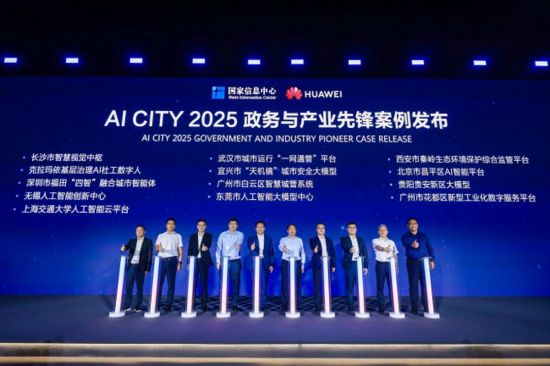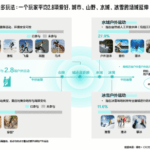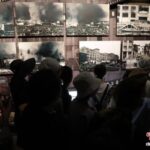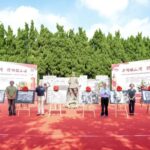At HUAWEI CONNECT 2025, Huawei successfully hosted the AI City Summit in collaboration with the Smart City Development Research Center of the National Information Center. The event, themed “Building a Smart World Cloud Foundation, Accelerating Government and Industry Intelligent Upgrades,” brought together industry experts, government representatives, and ecosystem partners to discuss three key areas: intelligent city governance, smart government affairs, and industrial digital-intelligent transformation. The discussions focused on how artificial intelligence technology is driving the evolution of government and city intelligence as well as industrial modernization. During the summit, the “AI CITY 2025 Government and Industry Pioneer Cases” were released, showcasing the implementation results of Huawei’s AI CITY concept and providing replicable models and pathways for smart government affairs, intelligent city construction, and industrial digital-intelligent transformation.
AI CITY Innovative Development Model Drives Urban Construction to a New Stage
In the intelligent era, AI technologies represented by large models are driving comprehensive improvements in urban production methods, lifestyles, and governance approaches. This transformation is not limited to iterative innovations in the technological field but also represents a breakthrough upgrade in the concept of smart city construction.
Regarding the strategic deployment of artificial intelligence and smart city development, a keynote speech titled “From Data Fusion to Knowledge-Driven: Innovative Development Models for Smart Cities in the Era of Large Models” was delivered. The presentation highlighted three distinct characteristics of the transition from traditional smart cities to AI CITY: First, unified large model centers for knowledge fusion and model-driven approaches; Second, the formation of unified knowledge bases that will reconstruct the interaction methods supporting various urban information systems; Third, comprehensive aggregation of knowledge from various fields, directly addressing complex applications to achieve multi-scenario, universal intelligent decision-making. AI CITY represents a new development model for the future – not just a Chinese solution but one that should be adopted by cities worldwide. The goal is to empower global cities with the AI CITY concept, enabling all urban residents to gain more benefits, all industries to prosper, and making Earth’s development more sustainable.
AI technology is profoundly influencing urban governance and industrial evolution. The advantages that artificial intelligence brings to comprehensive urban digital-intelligent transformation include new intelligent terminals, new computing infrastructure, new data infrastructure, new AI large models, and new ecosystems. There is a consistent commitment to systematic technological innovation around artificial intelligence, developing comprehensive capabilities across cloud, network, edge, devices, chips, and security technology platforms to empower AI CITY scenario innovation and model ecosystem development. AI development is accelerating the transition to comprehensive application scenarios, with urban AI scenario innovation unfolding across different levels of the digital economy, digital government, and digital society. In the future, AI CITY will accelerate the release of new AI productive forces, empowering comprehensive upgrades in urban governance, government services, and industries, achieving holistic and systematic improvements in urban artificial intelligence capabilities.
While promoting AI CITY system innovation, cooperation is also being continuously deepened to drive the transformation and upgrading of smart city construction. At the conference, a signing ceremony was held for the “Longgang AI CITY Full-Scenario Innovation Base,” where both parties will focus on the core path of “AI industrialization and industrial AIization” as a two-way driver, continuously promoting the deep integration of innovation chains, industrial chains, capital chains, and talent chains, accelerating the creation of a comprehensive, all-time artificial intelligence application demonstration zone, and building a global AI CITY innovation hub.
During the event, the “AI CITY 2025 Government and Industry Pioneer Cases” were officially released. Wuhan, Changsha, Xi’an, Karamay, Yixing, Beijing Changping, Shenzhen Futian, Guangzhou Baiyun, and Guiyang Gui’an were selected as typical cases for government services and urban governance, while Wuxi, Dongguan, and Guangzhou Huadu became exemplary models for industrial intelligent upgrading. These practical achievements collectively demonstrate the latest breakthroughs in how the AI CITY concept empowers urban governance and industrial transformation.
AI CITY Construction Bears Fruit, Smart Governance Paints New Urban Landscape
Amid the wave of intelligentization, efforts are advancing to promote smart city construction nationwide and worldwide, with the AI CITY concept continuously taking root and achieving significant results.
Guangzhou Huadu District possesses a strong industrial foundation and maintains a commitment to empowering industrial transformation and upgrading with AI technology. Huadu District has collaborated to build a new industrialization digital service platform, adhering to “three focuses” to promote the implementation of industrial transformation practical results. First, focusing on model innovation by pioneering a new digital “community canteen” model to address the practical challenges of small and medium enterprises being unwilling, afraid, or unable to transform; Second, focusing on





